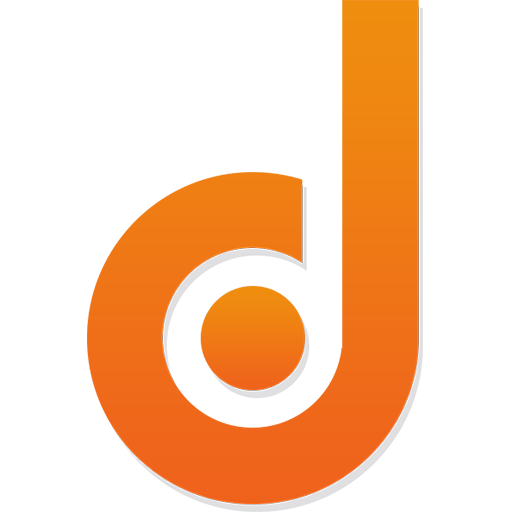The fitness app market is booming, with more and more people using their smartphones and tablets to track their workouts, diet, and overall health. According to a report by BCC Research, the global market for fitness apps is estimated to increase at a CAGR of 18.1% from $15.0 billion in 2022 to $34.4 billion in 2027.
This popularity is driving businesses to invest in fitness app development. But “How much does it cost to create a fitness app in 2024?” This is a common question asked by entrepreneurs and businesses who are considering developing their fitness apps.
There is a growing demand for high-quality fitness apps, so it is important to understand the factors that influence the cost of development.
In this blog post, we will provide a comprehensive guide to fitness app development costs in 2024, covering all the important factors that influence cost, as well as provide some tips on how to reduce the cost of development.
What is a Fitness App?
A fitness app is a mobile application that helps users track their fitness progress, including workouts, diet, and overall health.
It can be used on smartphones, tablets, and wearable devices, such as smartwatches and fitness trackers to set fitness goals, track progress towards those goals, and provide motivation and support.
Fitness apps can be used by people of all fitness levels, from beginners to experienced athletes. They can be used to help users lose weight, build muscle, improve cardiovascular health, or simply stay active.
What do Fitness Apps Offers?
Fitness apps can be used by people of all fitness levels and ages. They are especially beneficial for people who are new to fitness, as they can provide guidance and support.
They are also beneficial for people who have specific fitness goals, such as losing weight, building muscle, or training for a marathon.
Here are a few features and benefits of the fitness apps:
1. Tracking workouts and progress
Fitness apps can help you track your workouts and progress over time. This can help stay motivated and see how far you’ve come. Many apps allow you to track your distance, time, calories burned, and other metrics.
Example
- MyFitnessPal
- Nike Training Club
- Strava
2. Creating and managing workout plans
Some fitness apps also allow you to create and manage your workouts. This can help customize your workouts to your fitness goals and needs. Many apps also have a library of pre-made workouts that you can choose from.
Example
- GymShark Traning
- Addidas Training
3. Providing motivation and support
Fitness apps can also provide motivation and support. Many apps have social features that allow you to connect with other users and share your progress. Some apps also have virtual trainers or coaches who can provide you with guidance and support.
Example
- FitOn
- Workout for Women
- Freeletics: HIIT Fitness Coach
4. Tracking diet and nutrition
Some fitness apps also allow you to track your diet and nutrition. This can help make sure you’re eating a healthy diet and getting the nutrients you need. Many apps allow you to track your calories, macronutrients, and micronutrients.
Example
- MyFitnessPal
- LoseIt!
- Loom
5. Track overall health and wellness
Some fitness apps also allow you to track your overall health and wellness. This can include tracking your weight, blood pressure, heart rate, and other metrics. Many apps also have features that help you set and track fitness goals.
Example
- Fitbit
- Apple Health
- Google Fit
Who Can Find Value in Making a Fitness App?
Anyone with a passion for fitness and a desire to help others improve their health can consider building a fitness app. However, there are a few specific groups of people who may be particularly well-suited to app development:
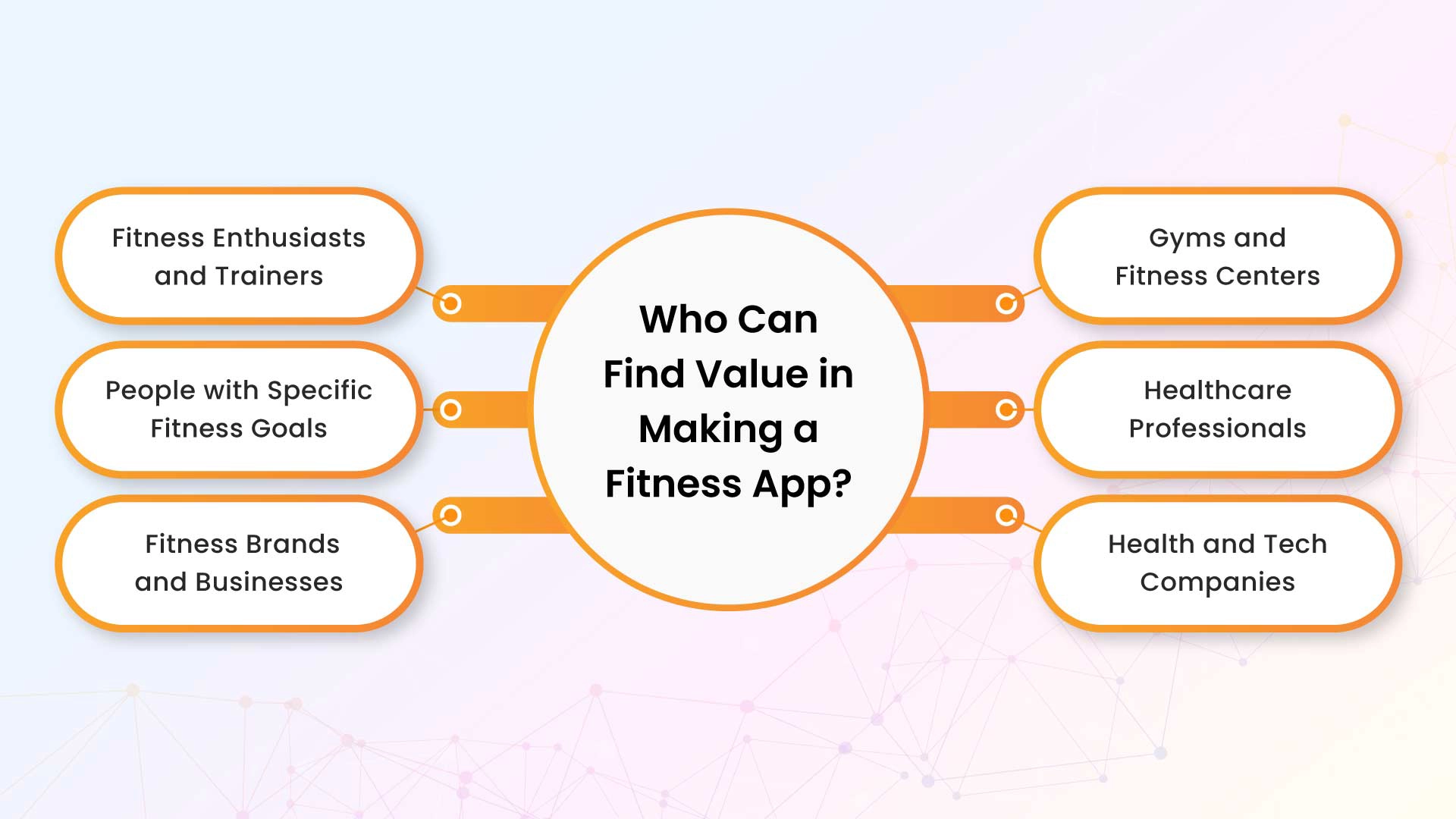
1. Fitness enthusiasts and Trainers
Fitness enthusiasts are passionate about fitness and are always looking for new ways to improve their performance.
They may have unique insights into the needs of other fitness enthusiasts and be able to develop an app that fills a gap in the market.
Examples
- A professional athlete could develop an app that provides customized training plans based on the athlete’s individual goals and needs.
- A fitness coach could develop an app that provides clients with access to workout videos, nutrition tracking, and progress tracking features.
2. People with specific fitness goals
People who have specific fitness goals, such as losing weight, building muscle, or training for a marathon, may also be well-suited to app development.
They may have personal experience with overcoming challenges and achieving their goals, which they can use to create an app that helps others do the same.
Examples
- A person who has successfully lost weight could develop an app that provides users with meal plans, exercise routines, and motivational support.
- A person who has trained for and completed a marathon could develop an app that provides users with a training plan, injury prevention tips, and race day strategies.
3. Fitness brands and businesses
Fitness brands and businesses can also benefit from developing fitness apps. Apps can be used to connect with customers, offer additional value, and generate revenue.
Examples
- A sportswear company could develop an app that provides users with access to exclusive workout videos, training plans, and discounts on products.
4. Gyms and Fitness Centers
Gyms and fitness centres can create branded fitness apps to enhance member engagement. Features like class schedules, bookings, and progress tracking can make their services more accessible and appealing.
Example
- A gym could develop an app that allows members to book classes, track their workouts, and access progress reports.
- A fitness studio can create an app to provide customers with access to workout videos, workout plans, and fitness tracking features.
5. Healthcare Professionals
Doctors, physical therapists, and nutritionists can use fitness apps as tools to help patients manage their health and recovery.
Example
- A physical therapist could develop an app for patients to track their exercises and monitor progress between appointments.
6. Health and Tech Companies
Existing health and tech companies can expand their product offerings by developing fitness apps. It allows them to leverage their expertise in the industry and diversify their revenue streams.
Example
- A health tech company could develop an app and integrate their existing health monitoring devices.
If you are considering building a fitness app, it is important to do your research and identify a niche market that you can serve well.
You should also develop a strong value proposition for your app and choose a reputable development team to help you create a high-quality product.
Fitness App Development Cost: How Much Does It Cost to Create a Fitness App?
When considering developing a fitness app, one of the most common questions that arise is: How much does Fitness App Development Costs? While there are several factors that influence the final price tag of a fitness app, including features, design, and platform, we can provide you with a rough estimate based on industry standards.
If you’re looking to develop a fitness app in 2024, you can get a ballpark idea of the cost by considering the time required for development and the hourly rate of app developers.
1. Basic Fitness App
A simple fitness app with core features like workout tracking, exercise demonstrations, and progress monitoring, you can expect the starting range to be approximately $20,000.
2. Intermediate Fitness App
An app with additional features, including meal tracking and social community integration, you can expect costs to start from $35,000.
3. Advanced Fitness App
If your vision includes creating a comprehensive fitness platform with advanced functionalities, wearables integration, and extensive customization, you can anticipate the starting range to be from $50,000 and beyond.
These estimates provide a baseline understanding of the cost involved. The cost of developing a fitness app can vary widely based on your project’s complexity and features.
To get an accurate estimate, it’s advisable to consult with a professional app development team and discuss your specific requirements.
Investing in a well-designed and functional fitness app can provide immense value to both your users and your business in the health and fitness niche.
Different Types of Fitness Apps and Their Costs
1. Fitness Coaching App
Example: FitCoach
Core Features:
- Personalized workout and nutrition plans
- Live video coaching sessions
- Progress tracking and analytics
- Goal setting and achievement tracking
Integration: FitCoach integrates with both Apple HealthKit and Google Fit to collect and display user health and fitness data, including steps taken, heart rate, and other relevant metrics.
Development Time: Approximately 6-8 months
Estimated Cost: The development cost for a fitness coaching app like FitCoach can start from $48,000, assuming an hourly rate of $50.
An additional $5,000 to $7,000 for integrating with both Apple HealthKit and Google Fit.
2. Workout App
Example: GymBuddy
Core Features:
- Extensive library of workout routines
- Exercise demonstration videos
- Personalized workout plans
- Progress tracking and statistics
Integration: GymBuddy integrates with Apple HealthKit and Google Fit to access user fitness data and provide a comprehensive view of their workouts and activity levels.
Development Time: Approximately 5-7 months
Estimated Cost: Assuming an hourly rate of $50, the development cost for a workout app like GymBuddy could start from $40,000.
An additional $4,000 to $6,000 for integrating with both Apple HealthKit and Google Fit.
3. Diet and Nutrition App
Example: NutriTrack
Core Features:
- Food diary and meal tracking
- Calorie counting and nutritional information
- Recipe suggestions and meal planning
- Integration with grocery lists
Integration: NutriTrack integrates with Apple HealthKit and Google Fit to access user health data, such as weight and calorie expenditure, for more accurate nutritional tracking.
Development Time: Approximately 6-8 months
Estimated Cost: The development cost for a diet and nutrition app like NutriTrack can start from $48,000, assuming an hourly rate of $50.
An additional $5,000 to $7,000 for integrating with both Apple HealthKit and Google Fit.
4. Activity Tracking App
Example: StepMaster
Core Features:
- Real-time step tracking
- Distance covered and calories burned
- Daily, weekly, and monthly progress charts
- Social sharing and challenges
Integration: StepMaster integrates with Apple HealthKit and Google Fit to gather data on steps taken, active minutes, and other fitness metrics from users’ devices.
Development Time: Approximately 4-6 months
Estimated Cost: Assuming an hourly rate of $50, the development cost for a workout app like GymBuddy could start from $32,000.
An additional $4,000 to $6,000 for integrating with both Apple HealthKit and Google Fit.
Factors Influencing Fitness App Development Costs
Fitness apps are becoming increasingly popular among people of all ages and fitness levels. There are a variety of factors that influence the fitness app development cost, including the choice of the platform, features and functionality of the app, design and UI/UX, and the development team’s experience.
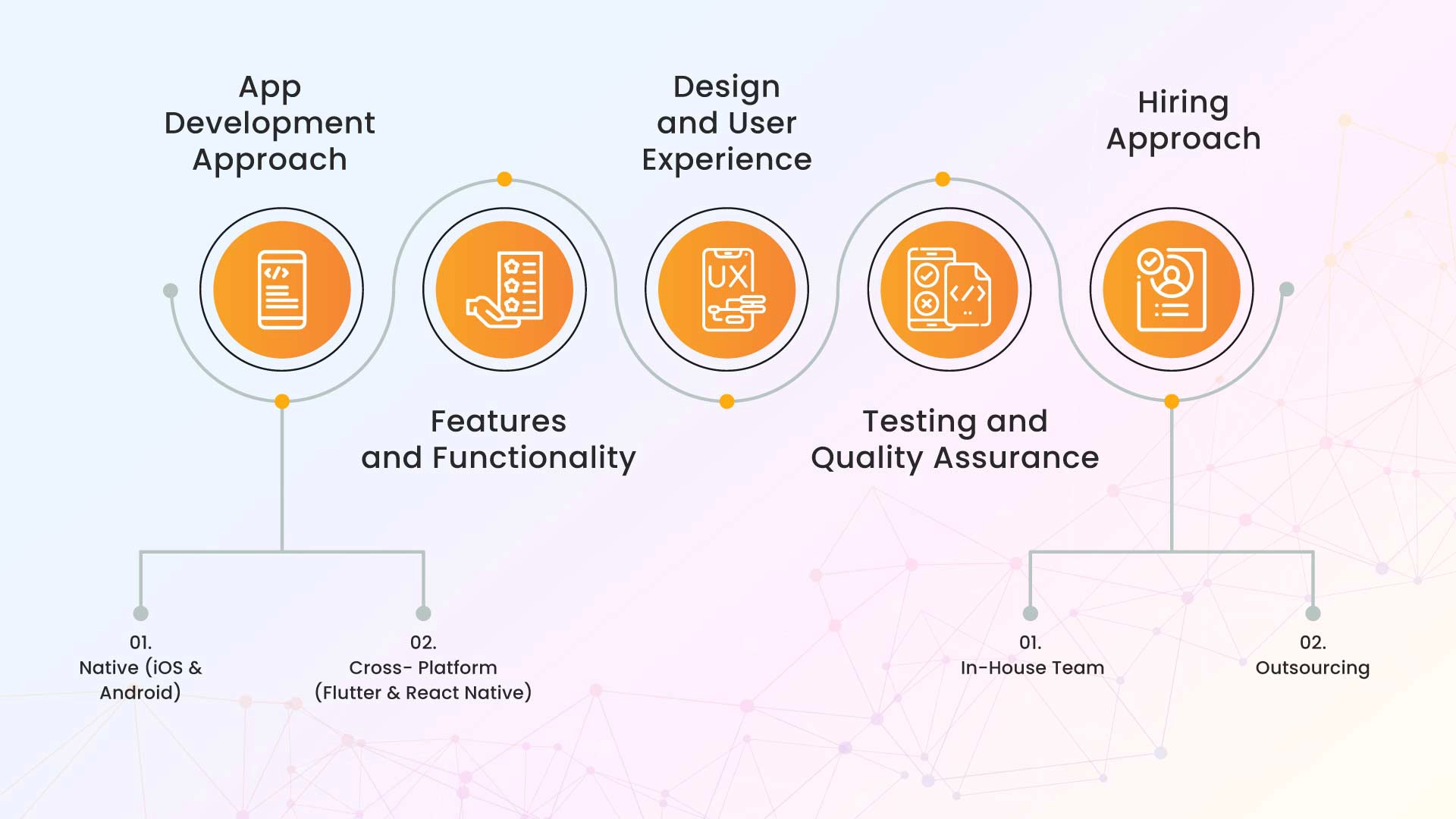
1. App Development Approach: iOS/Android/Cross-Platform
When it comes to building a fitness app, one of the pivotal decisions you’ll need to make is choosing the app development approach. The app development approach you choose will have a significant impact on the cost of your fitness app. There are two main approaches:
1. Native apps
Native apps are developed specifically for one platform, either iOS or Android. Native apps offer the best performance and user experience, but they are also the most expensive to develop.
How Much Does It Cost to Develop a Native Fitness App on iOS and Android?
Native app development is the process of creating two separate applications – one for iOS and another for Android. While this approach provides the best performance and user experience, it typically comes at a higher cost. Here’s a breakdown of the cost factors:
- Development Time: Native apps require separate coding for iOS (using Swift or Objective-C) and Android (using Java or Kotlin). This adds to the development time, which, in turn, increases costs.
- Design and UI/UX: Designing for both platforms separately can be more time-consuming and costly, as it necessitates adherence to platform-specific guidelines and aesthetics.
- Maintenance: Maintaining two separate codebases means double the effort in terms of updates, bug fixes, and compatibility with new devices and OS versions.
- Developer Expertise: Skilled developers for both iOS and Android are required, which may result in higher hourly rates.
The cost of developing a fitness app on iOS and Android can vary significantly, but as a general guideline, you can expect to invest anywhere from $30,000 to $150,000 or more for each platform.
2. Cross-platform apps
Cross-platform apps are developed using a single codebase that can be deployed to multiple platforms. Apps developed on Cross-platform frameworks are less expensive to develop than native apps, but they may not offer the same level of performance or user experience.
How Much Does It Cost to Develop a Cross-Platform Application?
Cross-platform app development allows you to write code once and deploy it on multiple platforms. This approach is known for its cost-efficiency, making it an attractive option for many app developers. Here are some key cost considerations for cross-platform app development:
- Development Time: Cross-platform frameworks such as React Native or Flutter enable developers to write code that works across both iOS and Android. This significantly reduces development time and costs.
- Unified Design: Cross-platform apps often have a unified design, which simplifies the UI/UX design process and can lead to cost savings.
- Maintenance: With a single codebase, maintenance and updates are streamlined, resulting in potentially lower ongoing costs.
- Developer Expertise: Developers experienced in cross-platform frameworks are generally available at competitive hourly rates.
For cross-platform app development costs, you can budget approximately $20,000 to $100,000 or more for your fitness app, depending on the app’s complexity and the choice of framework.
Ultimately, the choice between native and cross-platform development should be based on your project’s specific requirements, your budget constraints, and your target audience.
2. Features and Functionality
The features and functionality you choose for your fitness app will have the biggest impact on the cost.
A basic app with core features like activity tracking, workout planning, and progress tracking will be less expensive to develop than an app with more advanced features like AI-powered workout recommendations, personalized meal plans, and social media integration.
Here are some examples of basic, intermediate, and advanced features:
- Basic features: Login, user profile, activity tracking, workout planning, and progress reporting.
- Intermediate features: Social media integration, personalized workout recommendations, and community features.
- Advanced features: AI-powered workout recommendations, advanced analytics, and wearable device integration.
3. Design and UX
The design and user experience of your fitness app are also important factors to consider.
A well-designed app that is easy to use and navigate will be more likely to attract and retain users. However, a custom design can be more expensive to develop than a simple, off-the-shelf design.
Here are some examples of different design and UX approaches:
- Simple design: A straightforward design with basic navigation and functionality.
- Custom design: A unique design that reflects your brand identity and stands out from other fitness apps.
- Highly polished design: A high-quality design with smooth animations and transitions.
4. Hiring Approach (In-house vs Outsourced)
When building a fitness app, you need to decide whether to hire an in-house team or outsource development to a software development company or freelance developers. Both options have their advantages and disadvantages.
1. In-House Development
In-house development involves hiring a team of developers to work on your app full-time. This gives you more control over the development process and the final product. However, it is also more expensive, as you will need to pay your developers’ salaries and benefits.
2. Outsourced Development
Outsourced development involves hiring a software development company or freelance developers to create your app. This can be a more cost-effective option, as you will only pay for the work that is done. However, it is important to choose a reputable company or developer.
Here is a table that compares the two approaches:
Factor | In-house development | Outsourced development |
| Cost | More expensive | Less expensive |
| Control | More control over the development process | Less control over the development process |
| Expertise | Requires you to hire and manage skilled developers | Access to a wider pool of developers with the right skills and experience |
| Flexibility | Can easily add or remove developers as needed | May be more difficult to scale your team up or down |
| Communication | Easier to communicate with your team, as they will be located in the same place | More difficult to communicate with your team, as they may be located in a different time zone or country |
The best approach for you will depend on your budget, timeline, and specific needs. If you are on a tight budget or need to get your app to market quickly, then outsourcing development may be the better choice.
5. Testing and Quality Assurance
Testing and quality assurance are essential for developing a high-quality fitness app. Even a small bug can frustrate users and lead to negative reviews.
Testing costs can range from 20% to 30% of your total development budget. This includes testing on different devices, platforms, and browsers, as well as fixing any bugs that are found.
Quality assurance is an ongoing process that helps to ensure that your app is free of bugs and provides a seamless user experience. Regular quality assurance efforts are essential for maintaining a satisfied user base.
By investing in thorough testing and quality assurance, you can identify and fix problems early on, which can save you money and hassle in the long run.
Fitness App Monetization Strategies
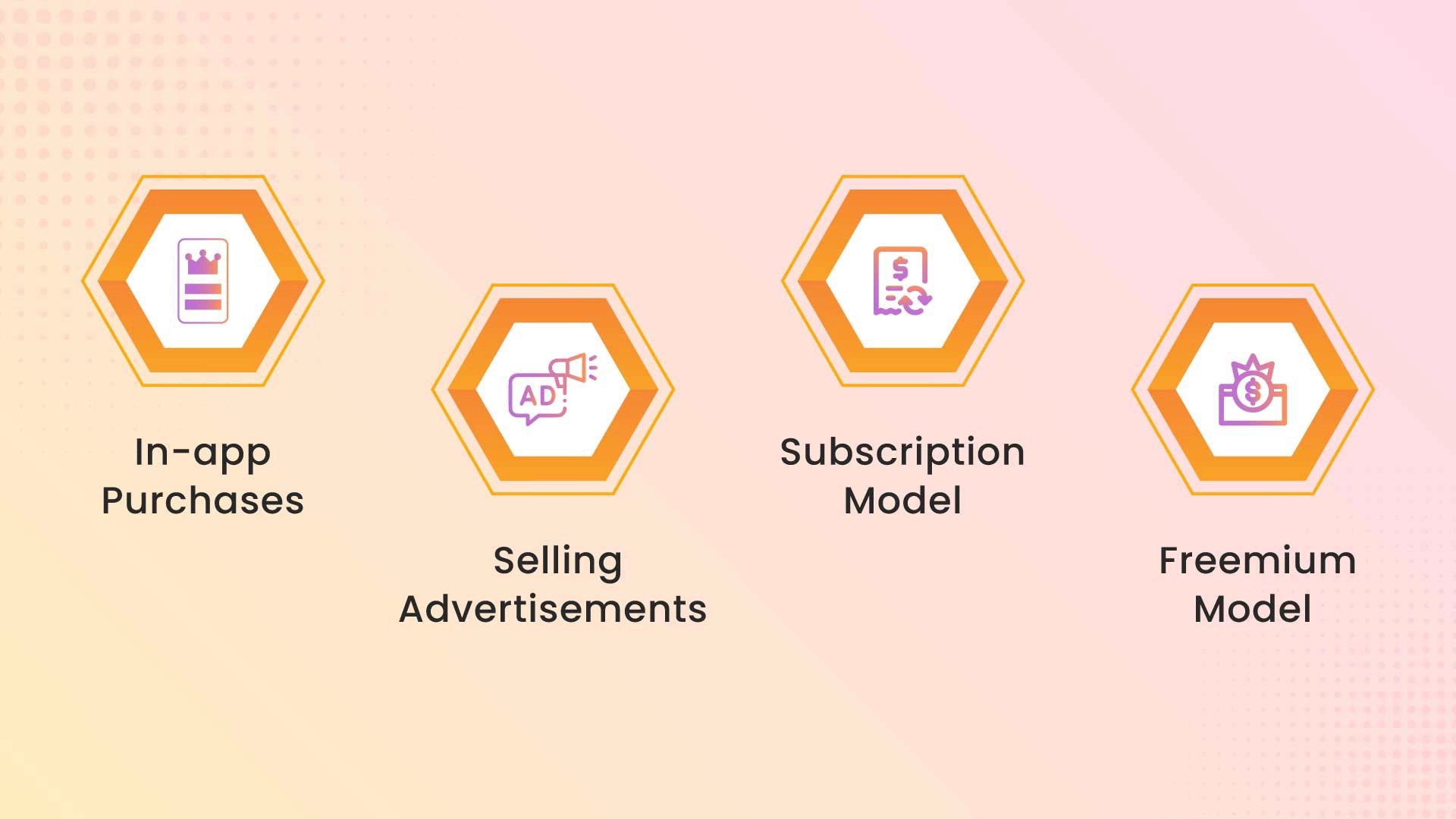
Building a fitness app can be a rewarding venture, but it’s equally important to explore effective monetization strategies that can not only recoup the costs of developing a fitness app but also potentially generate revenue.
1. In-app Purchases
In-app purchases are a popular monetization strategy for fitness apps. This approach allows users to download your app for free and then offers various premium features, content, or virtual goods within the app. Users can choose to make one-time purchases or opt for microtransactions to enhance their experience.
Here’s how in-app purchases can impact your app’s profitability:
- Pros: This strategy can be highly effective, especially if you offer valuable and appealing premium content. It allows you to cater to a broad audience while giving users the option to tailor their experience.
- Cons: Be cautious about balancing the fine line between offering free and premium content to avoid alienating users who are unwilling to pay.
2. Selling Advertisements
Integrating advertisements into your fitness app is a common method of generating revenue. You can partner with advertisers to display relevant ads to your user base. However, it’s important to strike a balance between monetization and user experience.
There are a few things to consider:
- Pros: Advertising can be a reliable source of revenue, especially if your app attracts a large user base. Advertisers often pay for ad space based on impressions or clicks.
- Cons: Excessive or intrusive ads can negatively impact the user experience and lead to churn. Careful ad placement and relevance are key to maintaining user engagement.
3. Subscription Model
A subscription model is a popular monetization strategy that offers premium content and features to subscribers on a regular, typically monthly or yearly, basis. For fitness apps, this could involve providing access to advanced workout plans, personal coaching, or enhanced tracking and analytics tools.
Subscriptions create a steady income stream, allowing you to provide ongoing value to your users while covering your development and maintenance costs.
Here’s how the subscription model affects your app’s cost and profitability:
- Pros: Subscriptions provide steady, recurring revenue, and it aligns user interests with your app’s long-term value.
- Cons: Convincing users to commit to a subscription requires you to consistently deliver value and quality. There may also be an initial investment in providing premium content that justifies the subscription cost.
4. Freemium Model
The freemium model offers a basic version of your fitness app for free, while premium features or content are available for a fee. This approach can attract a broader user base, but it also gives users the choice to upgrade based on their needs and preferences.
Here’s how the freemium model can influence your app’s financial performance:
- Pros: It allows you to engage a wide range of users. The ability to offer free basic features can attract a significant user base.
- Cons: You need to strike a balance between free and premium content. Ensure that your free offerings provide value, and that premium content justifies the cost.
How to Reduce Fitness App Development Cost?
Building a fitness app is a promising endeavour, but it’s essential to be mindful of your budget to ensure your project’s success. Here are a few practical ways to reduce fitness app development costs while maintaining the quality and functionality that your users expect.
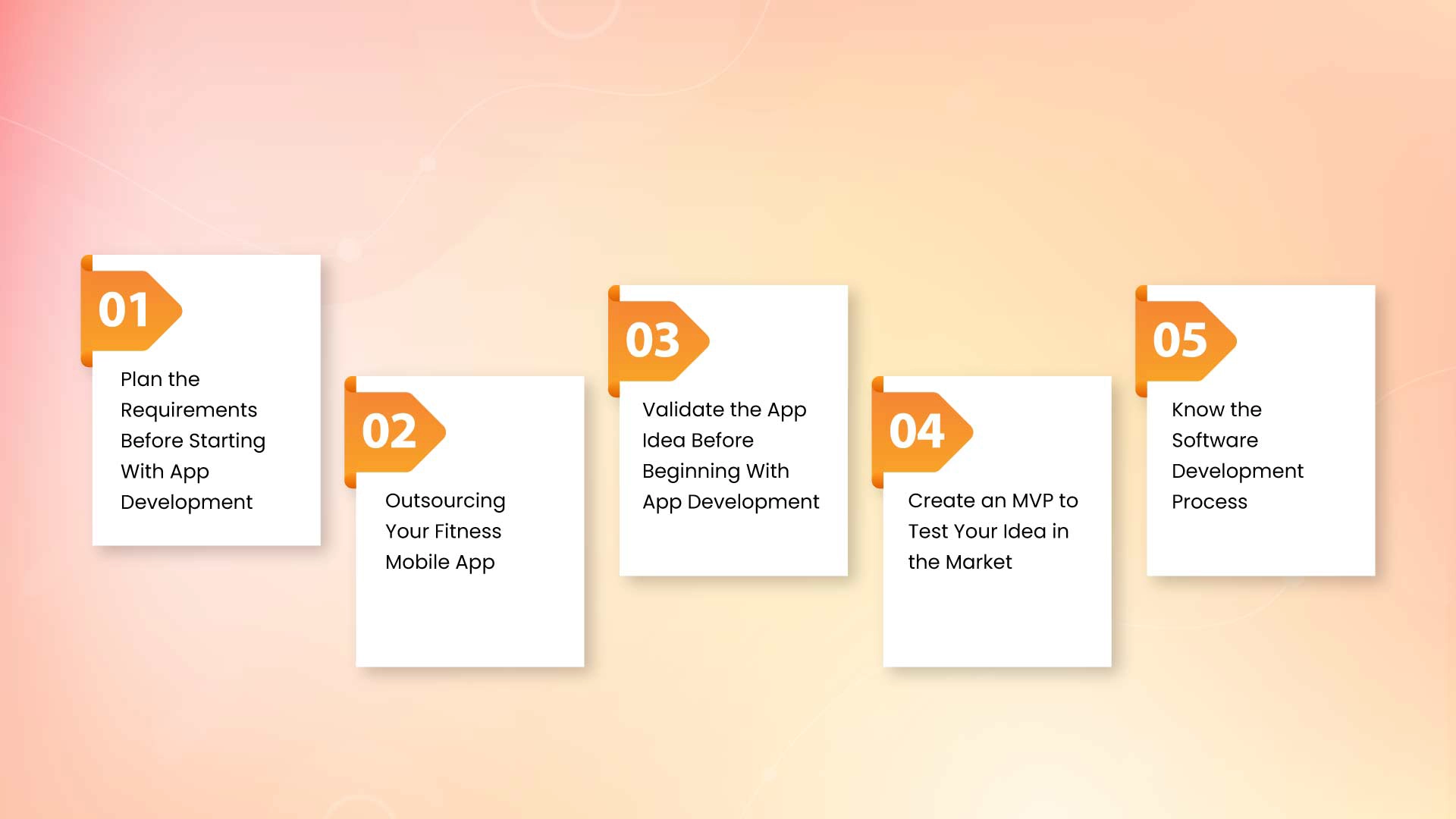
1. Plan the Requirements Before Starting With App Development
One of the best ways to reduce the cost of fitness app development is to carefully plan the requirements before starting development. This will help you to avoid scope creep and ensure that the app is developed to meet your specific needs.
When planning the requirements, it is important to consider the following:
- Target audience: Who are you developing the app for? What are their needs and wants?
- Core features: What are the essential features that your app must have?
- Nice-to-have features: What features would be nice to have, but are not essential?
- Budget: How much money can you afford to spend on development?
Once you have a good understanding of the requirements, you can start to create a detailed product roadmap. This will help you to track the development process and ensure that the app is on schedule and within budget.
2. Outsourcing Your Fitness Mobile App
Another way to reduce fitness app development costs is to outsource development to a team in a lower-cost country. There are many reputable development teams available in countries such as India, Ukraine, and Eastern Europe.
When outsourcing development, it is important to choose a team with experience in developing fitness apps. You should also carefully review the development contract before signing it.
3. Validate the App Idea Before Beginning With App Development
Before you start developing your fitness app, it is important to validate the app idea. This means testing the idea with potential users to see if there is a demand for it.
There are a few different ways to validate your app idea:
- Create a landing page for your app and collect email addresses from interested users.
- Run a survey to get feedback on your app idea.
- Create a prototype of your app and test it with a small group of users.
By validating your app idea before development, you can reduce the risk of developing an app that no one wants to use.
4. Create an MVP to Test Your Idea in the Market
An MVP (minimum viable product) is a basic version of your app that includes the core features. This is a great way to test your app idea with users and get feedback before investing in full development.
When creating an MVP, it is important to focus on the core features of your app. You can add additional features later once you have validated the app idea and have a better understanding of what users want.
5. Know the Software Development Process
Understanding the software development process can help you to reduce fitness app development costs.
For example, you can avoid expensive mistakes by knowing the different stages of development and the tasks that need to be completed at each stage.
The software development process typically includes the following stages:
- Requirements gathering: This stage involves gathering and analyzing the requirements for the app.
- System design: This stage involves designing the overall architecture of the app.
- Development: This stage involves writing the code for the app.
- Testing: This stage involves testing the app to ensure that it meets the requirements and is free of bugs.
- Deployment: This stage involves making the app available to users.
By understanding the software development process, you can make informed decisions about the development of your fitness app and reduce the risk of costly mistakes.
Conclusion
Understanding the costs associated with fitness app development is crucial for a successful venture.
Whether you’re considering creating a fitness app for personal training, wellness, or other health-related purposes, by carefully planning your project and choosing the right development partner, you can minimize costs and maximize your chances of success.
Ready to transform your fitness app idea into reality? At Digimonk Solutions, we know that staying within your budget is crucial. Our team of experts specializes in mobile app development for health and fitness.
When you choose to partner with us, you’re making an informed decision that aligns with your goals. Your app’s journey to success begins here.

